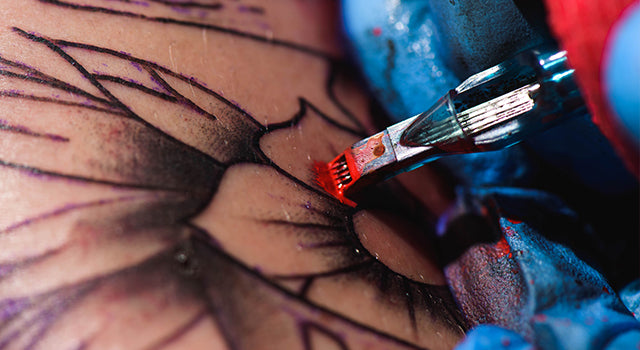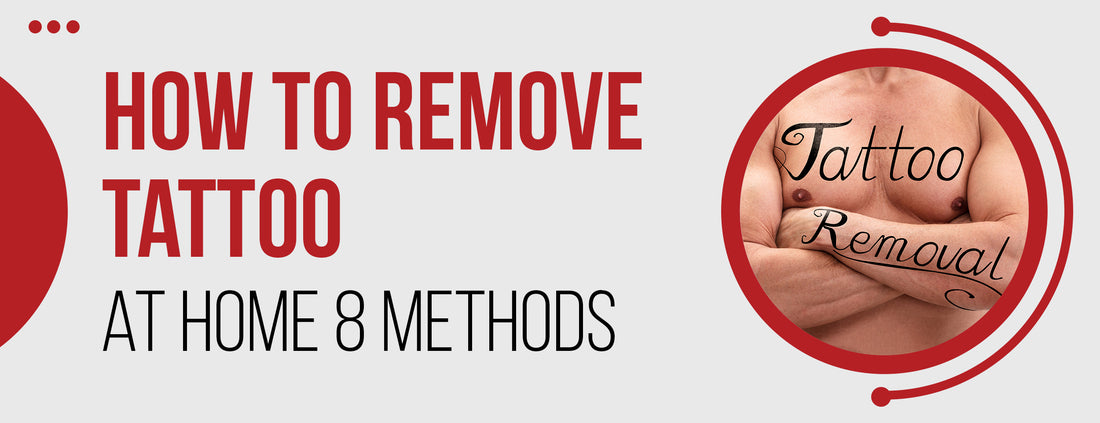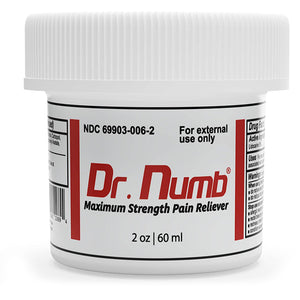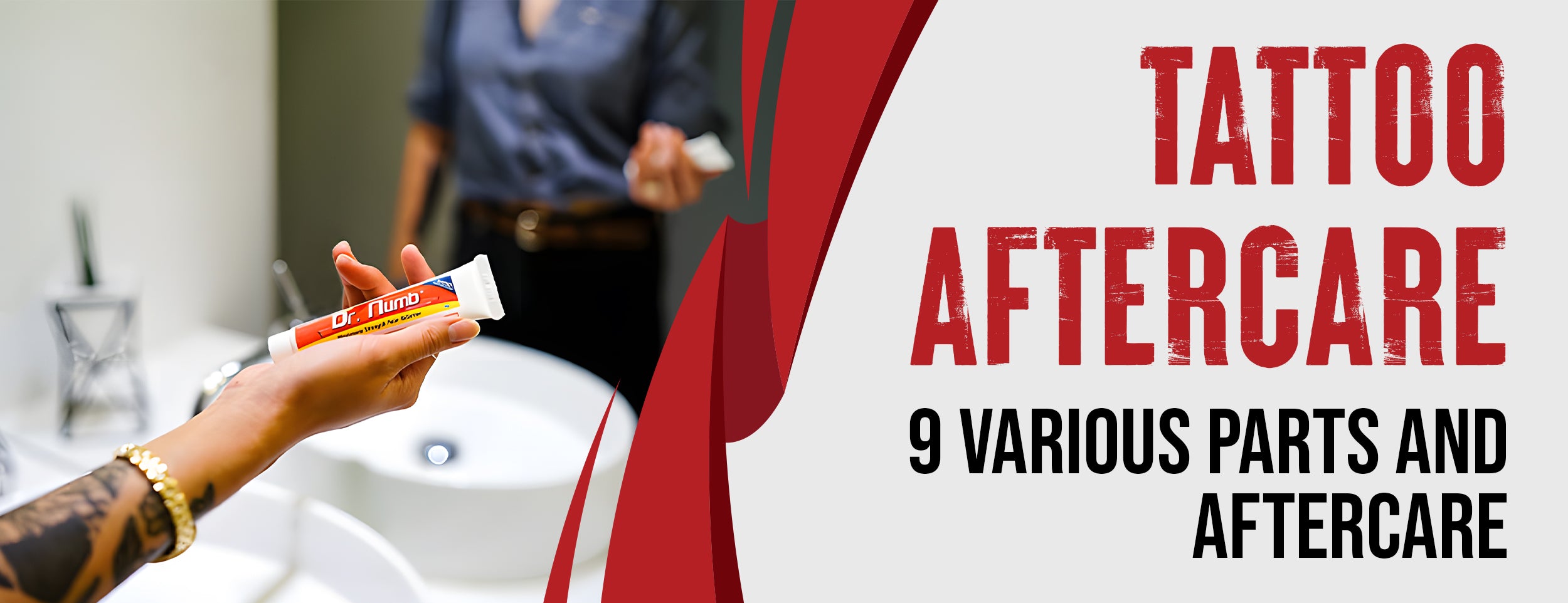DIY tattoo removal at home is a trend that may catch your attention. It's important to remember that while DIY tattoo removal may be attractive, it also comes with potential risks and side effects.
A standard home tattoo removal method is salabrasion, where the skin is rubbed with salt. This old method can effectively remove enough skin to reach the ink layer. Coarse sand or sandpaper can also yield similar results.
In this blog post, we will explore the different DIY methods for removing tattoos at home and the risks and benefits associated with each method. We will delve into each technique, providing details on the process, effects, precautions, tips for safe application, personal testimonies, and success stories. Keep reading to learn more.
How to Remove Tattoo at Home: 8 Best Methods

When deciding to remove a tattoo at home, it's essential to consider the available methods carefully. This article explores DIY tattoo removal methods, including Mechanical, Chemical, and Other techniques, with explanations.
Mechanical Methods
Salabrasion and table salt scrub are two mechanical methods popular among people looking to remove their tattoos at home. It is essential to note that both ways can be painful and may cause scarring. They should be approached with caution.
Salabrasion
Salabrasion involves scrubbing your tattoo with salt and sand until the skin is raw. This allows the ink to be drawn out from the skin. Here are some tips to make this method safer and more effective:
- Consult a doctor before attempting salabrasion to ensure it is safe to try.
- Use coarse salt and sand that is free of impurities.
- Apply a numbing cream or ice pack to the area to reduce pain.
- After scrubbing, let the area heal and keep it clean to avoid infection.

Table Salt Scrub
Table salt scrub involves creating a paste from salt and water and then scrubbing it onto the tattoo using a sponge or brush. For a safer and more effective method, here are some tips:
- Make sure that the area you are treating is clean and dry.
- Use a gentle application to avoid damaging your skin.
- Repeat the process several times a day until you see results.
- It may take several months to see significant results with this method.
Chemical Methods
Chemical methods use natural acids to remove the ink from your tattoo. It is important to note that these acids can also cause skin irritation and scarring. It is essential to approach these methods with caution.
Lemon Juice Cream
Lemon juice cream involves mixing lemon juice with a thickening agent like cornstarch or flour to create a paste. Here are some tips to:
- Test the lemon juice by applying it to the tattoo.
- Apply the paste onto your tattoo and leave it on for 30 minutes.
- Rinse the paste off with water and dry the area.
- Repeat daily until the tattoo fades.
Aloe Vera and Yoghurt Cream

Aloe vera and yogurt cream combine aloe vera and yogurt to create a paste. Tips for making this method more effective and safer:
- Test the cream first on your tattoo before using it.
- Cover the area with a bandage to keep the paste in place.
- After 20 minutes, remove the application and wash the area with water.
- You should repeat this process every day until your tattoo fades away.
Apple Cider Vinegar
Apple cider vinegar involves applying the vinegar to the tattoo with a cotton ball or pad. Tips to improve safety and effectiveness:
- Test the vinegar on your skin before using it on your tattoo.
- Soak the cotton ball or residence in the vinegar and apply it to the tattoo.
- Bandage the area to keep the vinegar in place.
- After several hours, remove the application and clean the area.
- Until the tattoo fades, repeat the process daily.
Hydrogen Peroxide
Hydrogen peroxide involves applying the chemical to the tattoo using a cotton ball or pad. Tips for making the method safer:
- Test the hydrogen peroxide on a small skin area before applying it to the tattoo.
- Apply the hydrogen peroxide to the tattoo and cover it with a bandage.
- Remove the bandage and clean the area after several hours.
- Keep doing it until the tattoo fades.

Salicylic Acid and Glycolic Acid
Salicylic acid and glycolic acid involve applying the acids directly onto tattoos with cotton balls or pads. Here are some tips for improving this method:
- Test the acids on a small area of your skin before applying them to the tattoo.
- Apply the acid and bandage the tattoo.
- Remove the bandage and wash the area after a few hours.
- Continue the process daily until the tattoo has faded.
Other Methods
Honey
Honey is a natural moisturizer that can help to break down the pigments in the tattoo over time. When mixed with a thickening agent such as salt, it forms a paste that can be applied to the tattooed area.
- Mix honey with salt to form a thick paste.
- Apply the paste to the tattooed area, covering the entire region.
- Leave the paste on for 30 minutes and then rinse with lukewarm water.
- Continually repeat this process until the tattoo is removed.
Tattoo Removal at Home: Benefits of DIY
While the risks are significant, there are some benefits to DIY tattoo removal at home. It's essential to weigh these advantages against the potential drawbacks and make an informed choice that aligns with your preferences and circumstances.
Cost-Effective Alternative to Professional Services
- Lower Cost: DIY tattoo removal is typically more budget-friendly than professional tattoo removal services.
- Affordability: It allows individuals with limited financial resources to pursue tattoo removal without breaking the bank.
Convenience and Privacy
- Performing the Procedure at Home: DIY tattoo removal can be done in the comfort of your own home, eliminating the need for multiple clinic visits.
- Privacy: You can maintain complete privacy, which can be especially important for those who prefer not to share their tattoo removal journey with others.
Customization and Experimentation
- Tailored to Personal Preference: DIY methods offer the flexibility to choose the removal technique according to your comfort levels.
- Experimentation: You can experiment with different DIY methods to find the best one for your unique tattoo.

Avoidance of Potential Judgment or Discrimination
- Non-Judgmental Environment: Some individuals may feel self-conscious about their tattoos or worry about judgment when visiting professional tattoo removal clinics.
- Social Comfort: DIY tattoo removal allows you to avoid potential discomfort or discrimination, providing a more inclusive and accepting atmosphere.
Empowerment and Control
- Taking Charge: DIY tattoo removal empowers you to take control of the process, making decisions about the methods and timeline that suit your needs.
- Self-Determination: You can set your own pace, helping you feel more in control of your tattoo removal journey.
DIY Home Tattoo Removal: Risks and Side Effects
While removing a tattoo at home may seem enticing, knowing about the DIY method’s potential risks and side effects is crucial. Understanding these risks will help you make an informed decision about whether to proceed with at-home tattoo removal.
The Irritated Skin

- Skin Irritation: DIY tattoo removal methods often involve abrasive or chemical agents that can irritate the skin, leading to redness, itching, and discomfort.
- Redness: The treated area may become red and inflamed, causing temporary discoloration.
- Scarring: Improper execution or overzealous application of DIY techniques can result in permanent scarring, which may be more noticeable than the tattoo itself.
Risks of Infection
- Infection: Using non-sterile tools or unsanitary conditions can increase the disease risk, particularly if the skin is broken during removal.
- Health Risks: Certain DIY methods, such as hydrogen peroxide or abrasive scrubbing, can adversely affect the skin and overall health if not used carefully.
Inaccurate Tattoo Removal
- Uneven Removal: DIY methods may not uniformly fade the tattoo, leading to uneven pigmentation and a patchy appearance.
- Incomplete Removal: Some DIY techniques may only partially remove the tattoo, leaving remnants of ink.

DIY Methods Are Difficult to Apply and Dose
- Lack of Expertise: With professional training, gauging the correct application and dosage of DIY tattoo removal methods can be easy.
- Risk of Overuse: Overuse or improper application of chemicals can result in more harm than good.
Pain and Discomfort During Removal
- Pain: DIY tattoo removal can be painful, causing discomfort.
- Skin Sensitivity: Skin may become more sensitive, leading to heightened pain during future attempts or professional removal procedures.
Conclusion
While DIY tattoo removal methods may seem cost-efficient and convenient, they have risks and side effects. The safest and most effective way for tattoo removal is still through professional services. Testing these methods out on small or less visible tattoos may be worth a try for those who cannot afford professional help or are adventurous.
Before attempting any DIY tattoo removal method, knowing the risks, following safety precautions, and consulting a healthcare professional beforehand is essential. Remember that removing a tattoo is a process and may require multiple sessions. It takes patience, caution, and willingness to learn. So, take your time, research well, and, most importantly, stay safe.













![Antibiotics and Tattoos: 3 Risks and 3 Effects [with 4 Precautions]](http://drnumb.com/cdn/shop/articles/Can_You_Get_Tattooed_On_Antibiotics__3_Risks_and_3_Effects_4_Precautions.jpg?v=1714128292)

